Conceptualization of animals, plants and nature
Block 5
The 19th Century
Liebig's laboratory in 1840
|
Contents
|
Conceptualization of animals, plants and nature |
||
Block 5 |
The 19th Century |
|
|
|
|
|
The great event for the study of animals and plants of the 19th Century was the emergence of Life and the new perspective on the human being created by the theory of evolution. Our arrangements for living together received a different kind of attention in the work of Marx, those he drew on and those he inspired; and also from Darwin and the Darwinists. |
|
Web stuff A website designed to survey the relationships between literary works and natural history in the century before Charles Darwin's On the Origin of Species (1859) The Internet History of Science Sourcebook has pointers to important primary texts and also some secondary material. |
The organism as a complex of sub systems, interacting with each other in such a way as to maintain the integrity of the whole.
If you shift your focus from seeing the animal like a bird-watcher (and especially a twitcher) sees birds - as items whose interest is essentially in their discernible appearance and behaviour - to thinking of it as a working system, you have undergone the Cuvierian revolution. (George Cuvier, 1769-1832. See Reading from Foucault, The Order of Things, UK edition London 1970, Tavistock, pp. 263-279.)
What can I mean by "working system"?
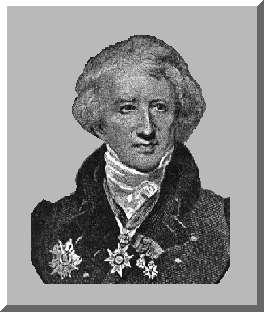 |
|
Cuvier Thanks to UCMP, who have a useful introduction.
|
It is the idea of a complex thing, with lots of internal organisation - not just a blob - where the internal organisation is such as to make the whole thing hang together and go on hanging together.
A running car has this kind of internal organization. It has lots of parts, and they need to mesh together if the whole machine is to keep running. If it is petrol based, there will need to be cylinders with pistons in them and spark plugs, and the spark plugs will have to spark at just the right moment in relation to the movement of the pistons etc.
For an organism, failing to hang together is death, the disintegration of the organism. The internal organization of the component parts is such as to keep the integration going - to keep the entity going as a unity.
Living things, post Cuvier, are things with this kind of internal organization. There are a number of components parts, and they interact in such a way as to maintain their configuration.
Components need to support each other in this way because if they didn't they would fall apart. The living state, the state of continuing integration of the components, is unstable. It needs activity to keep it going. If a high degree of mutual support between the parts was not maintained, they would fall into a heap: and processes of decay would secure their thorough dispersion.
|
Oversimplified example: Eg you need a connected set of organs to get food, extract energy from food and distribute that energy if any one of them is to work. If you have inside an animal a 'component' capable of extracting energy and usable material for growth and repair - a digestive system, say - then you also need the support of a suitable interface between that and the outside source of raw material. And you need a mouth, perhaps, and legs to chase prey etc. And you need an interface linking the energy extracted and the areas in the body which actually need to consume it: a blood circulation system, for example, taking sugar from its site of extraction round the rest of the body. To say this is to subject the organism to functional analysis : you say it is made up of parts, each of which perform a function in the working of the whole, in keeping the whole going. |
Notice that the easy phrase "keeping the whole going" brings in very quietly the notion of the whole having a goal. The parts can only have functions if the whole to which they belong has a goal. The goal can be simple, like just staying in one piece: staying integrated, staying alive.
Notice that buried here too is the idea of a basic opposition between life and not life: not life is the state to which things in the universe tend, except where very special configurations of elements come together and achieve an island of organization capable of preserving itself for a time from disintegration.
|
Summary: The new conception of the living thing: a very special configuration of components capable through mutual support of keeping disintegration temporarily at bay. |
|
This new conception of the living thing has a number of major implications: 1. The idea of a limited number of plans. The conclusion that that are a limited number of basic configurations open to things that aspire to life - the 'archetype' idea. This is the thesis that not any old assemblage of parts will work: there are probably a very limited number of solutions to the "engineering" problem of designing a system that is unstable and yet capable of maintaining itself in its unstable state. (At any one time there are a limited number of basic blueprints for a motor car.) There's a supplementary note on this. 2. A new concept of life. - I explore this a little below 3. A new concept of function - one that de-emphasizes the identification of organs in terms of physical description. There's also a (tiny) supplementary note on this. (4. A new approach to classification.) There's just a side note on this. |
I deal in the main text below with the most germane of these, the new concept of life:-
|
Click here for a more detailed account of the changes outlined here
|
The new idea of the living thing was of a set of components which belonged to a whole and which through their interactions preserved the integrity of the whole.
This idea takes shape in the work of Cuvier, approaching from the perspective of comparative anatomy. It was conceived in relation to the animal's gross parts - its organs and organ-systems.
At the end of the 18th Century a new understanding was developing of what underlay the gross structures, replacing the 18th Century notion of a congeries of particles moving about under the influence of a limited number of "forces".
The new understanding grows out of the application of chemical analysis to substances found in or produced by animals and plants. Chemical analysis showed what a substance was made up of, and revealed the proportions of the various components identified. It relied, as far as animal and plant substances were concerned, to begin with on destructive distillation - heating the stuff to the point of burning it and collecting the various products; and then on what was in essence still burning, but burning in a way that permitted close control. The stuff to be analysed was heated with what is known as an oxidizing agent. (Burning is a fast sort of oxidation.) Once again, the products of the oxidation process were collected and weighed.
The use of oxidizing agents, developed to begin with by Lavoisier, revolutionized the accuracy of analysis. Better and better agents were identified, until by the 1830s analysis had been refined into a standard laboratory technique that was reliable and accurate.
In the first decade of the 19th Century therefore you have more and more substances found in living things being subjected to analysis: and the picture begins to emerge, first, of the living thing as producing a range of (now) organic substances, and then as tantamount to chemical laboratories themselves. The living thing came to be seen as a configuration of chemicals which had been produced by the body.
Beyond that, there arose the question of what happened to the chemicals once synthesized, a question that was answered with the thought that they must enter into chemical interactions with their neighbours. So the body becomes thought of not simply as a syntheses and storehouse of chemicals, but as a configuration of chemical processes - and as simply a configuration of chemical processes. That was what an organic body was: that was what life was.
Before the focus had been on structure - the preoccupation of the 18th Century, and one which drew attention to plants in preference to animals. Now the idea of a set of static structures was seen to be illusory, or at least superficial. There were bits of static structure - bark, for example - but those bits were dead. Wherever there was life there was a dynamic process, a network of ongoing chemical processes which produced the appearance of persistent structure at the level of gross observation. The interest in process lead away from the plant to the animal as possessing the greater potential for study.
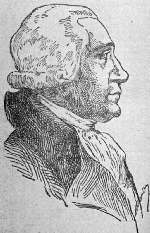 |
|
Vicq D'Azyr Thanks to Founders of Neurology exhibition mounted by the University of Illinois |
This new notion of what life was substantiated a newly emphatic distinction between the living and the non-living.
Up to this period there was an articulation of animals, plants and minerals into "three or four kingdoms". Afterwards there were just two - those things that were alive and those things that were not.
"There are only two kingdoms in nature: one enjoys life and the other is deprived of it"
(Vicq D'Azyr, writing in 1786; quoted by Foucault, The Order of Things, as cited above, p.232).
Foucault has a dramatic account of the conceptual shift that took place at the beginning of the 19th Century.
I am glossing here the account given by Foucault in the Reading, from The Order of Things, as cited, around page 265.
Foucault expresses, the point that with the new conception of organism you have two levels - what is inspectable at one level and the organization underlying what is inspectable at another - by saying that the 18th C table of identities and differences was broken up; that the level of identities was uncoupled from the level of differences.
"The Same and the Other" belong to the same space in the Classical period, and occasion natural history; "something like biology becomes possible when this unity of level begins to break up, and when differences stand out against the background of an identity that is deeper and, as it were, more serious than that unity".
So where you had differences and identities considered as belonging to the same two dimensional plane, you now have identities of function at a deep level actually manifesting themselves on the surface through features that may not be the same at all: an
In the 18th Century you have therefore a two-dimensional table of differences and identities. In the 19th Century, this gives way to a three dimensional conception: differences and identities become seen as the the consequence of structural organization underlying them.
Is this clear?
The difficulty is in understanding the Classical conception: we still operate with what replaced it, the three dimensional conception which thinks that how an animal appears, what observable features it possesses, are the surface manifestations of what is truly significant, namely the functional organization of the organism. Can we imagine this third dimension not being there? That is what Foucault would have us do if we are to grasp the Classical perspective.
What parallel would be helpful?
It sometimes comes as a shock to think of a cluster of islands as the tops of a mountain range most of which is submerged. The surprise is thinking of them as having something like a "third dimension" which we had not thought of them as having before, a dimension that goes down below the waves and allows us to think of the islands as linked up. This gives us a bit of a parallel for the idea of becoming aware of a third dimension for animals and plants.
But can we take the parallel further and think of the features of the islands as thrown up by the organization of the structures that lie under the waves?
We can imagine Classical persons approaching the classification of the islands like this: visit the islands, survey them carefully, list their observable features (size, whether wooded, whether hilly, type of coastline etc); then set up groups based (one way or another) on these features.
A post 18th Century person would say: what you have to notice is that these surface features, or some of them, flow from the underlying structure of the "mountain range" the islands belong to. Take this point and you immediately have a way of identifying some observable features as more significant from the point of view of classifying than others eg there will be the signs of an island's volcanic character will be more important than purely accidental features (shape?).
There is also the point that several different characters will be signs of the same thing, so that surface differences become compatible with fundamental identities. (Eg one surface covered by grass and another by trees, when the underlying feature is the capacity to support vegetation of some kind or other.)
But the real revolution comes when the post-18th Century person goes on to say not just that surface features can be put into an order of significance in virtue of their relationship to underlying structure but that we ought to be interested in the underlying structure as such, and only bother with the problem of putting things into order insofar as this serves other purposes.
What do you think?Does Foucault's conception here make sense? Is it convincing? |
In the 18th Century 'atomism' was applied to the physical world, the mental world and the social world. Though Romanticism, through Hegel particularly, develops alternative conceptions, social thought in the 19th Century by no means abandons the atomistic outlook. Foucault says that the 19th Century witness the 'irruption of time', which can be seen most powerfully perhaps in the way in which process displaces structure in the conception of the living world. But there is also a reconceived interest in the change to which human life is thought to be subject. This likewise begins to be thought of in terms of ongoing historical processes.
It is often noted that you have in the 19th Century a quickening of interest in the development of human nations or cultures over long spans of time: E.g. Hegel, Compte, Spencer, Marx. This is true, but the distinctive thing is that current structures of society, as well as any developmental change, started to be put down to processes that were going on constantly. (This is the interesting thing, not the simple idea, which was not distinctive, that human natures or cultures undergo development over time.)
Four examples: Hegel, Compte, Spencer, Marx.
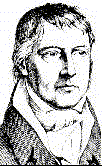 |
|
Hegel Thanks to the
|
(1770-1831)
I have said that the great dynamo of Romantic thought was the reassertion of agency.
There was a rebellious insistence that human beings were agents, and also that Nature was an agent. Hegel's assertion was that Nations were agents. He treated a people, a society, a Nation as a human being, and a romantic human being at that. A nation, like an individual man or woman had the purpose of giving full expression, as their life developed, of a potential. Here is Isaiah Berlin:
'Hegel transferred the concept of the personal character of the individual, the aims, logic, quality of his thoughts, his choices - his whole activity as it unfolds itself throughout a man's [sic] life - the case of entire cultures and nations...[Part of the immense importance of Hegel consists in the creation of new disciplines which] consist in the history and criticism of human institutions, viewed as great collective quasi-personalities, which possess a life and character of their own, [leading to] the treatment of state, race, history, epoch, for example, as super-persons...'
(Isaiah Berlin, Karl Marx, First published 1939, 1963 ed. Oxford, OUP, pp 51 and 54.)
The development of such super-persons, as is well known, was put down to a dialectical process. One thing provokes its opposite, and out of that juxtaposition comes a third thing which synthesizes the two originals. Once formed this in turn generates a new opposite, and so the process repeats itself.
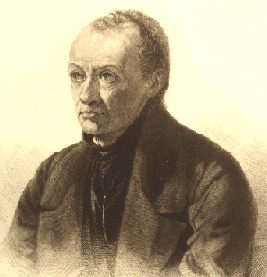 |
|
Compte Thanks to Peter Landry's pages
|
(1798-1857)
According to Compte, any society had to pass through three stages.
First is a period (the theological), he said, in which natural phenomena are ascribed to the actions of supernatural beings.
In the next stage - the metaphysical- 'principle', and 'forces' replace supernatural will, Nature replaces God.
Finally in the ultimate (Positive) stage arrives, when reference to metaphysical entities are abandoned and science speaks only of relations between facts, after the manner of Hume.
The dynamic for Compte is what? Not entirely clear, but it was a matter of Trends which could not be bucked.
(For a readable account of Compte, see Basil Willey's chapter in his 19th Century Studies, London, 1949, Chatto, from which the quotations below are drawn unless otherwise indicated.)
For Compte, progress was the inevitable destiny of humanity. 'Social dynamics' invariably produces improvement. 'The gradual development of humanity favours a growing preponderance of the noblest tendencies of our nature'.
Humanity was to take the place of God in religion, but the rest of religion was pretty much to be retained.
In the second phase of his thought, following the death of Cotilde, with whom he had a brief but intensely romantic (ised?) relationship, Compte gave priority to the affections over the 'head'.
He looks forward to much smaller political groupings (the break up of contemporary Europe).
The blending of 'order' and 'progress' is a preoccupation of 19th C thought, says Willey, and Compte made some success of it. Willey's view is that attempts to combine the structure and aims of the medieval world with the beliefs of the 19th C....
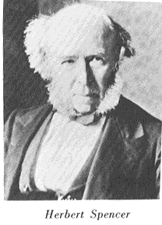 |
|
Thanks to Bolender.com, which also offers a Powerpoint presentation on Spencer |
(1820-1903)
The nineteenth century polymath Herbert Spencer was responsible for proposing perhaps the closest parallel between organic and social evolution, which begins, he proposed, with a number of elementarily simple forms of society, from which arise a wider and ever-widening diversity of forms of ever-ascending orders of complexity.
In other words, just as the diversity and complexity of modern animals and plants are supposed to have evolved from one or a few simple primeval organisms, so Spencer supposed that the varied and sophisticated societies of his day could trace their ancestry back to one or two ancient social systems of elementary organization.
A less ambitious thesis leaves out all talk of a common root for modern societies and insists more simply that all societies pass through one and the same developmental path.
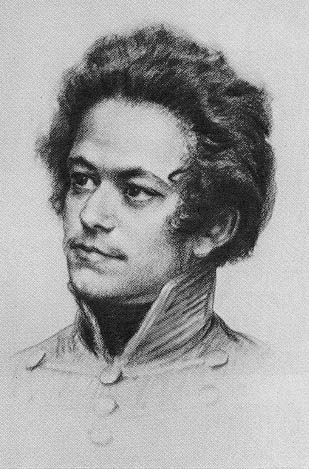 |
|
Marx in 1839 Thanks to the Marx-Engels Image Library |
(1818-1883)
Marx's influential views were based on a theory of how social change happened, a process which he thought produced a number of distinct phases in European history.
Marx first identifies a tribal condition, in which the structure is little more than an extension of that of the family and the necessities of life are met by hunting and fishing, by cattle breeding or by agriculture.
When several tribal units unite to form a city, a second stage is reached, in which the necessary productive labour is performed by slaves.
The third stage is represented by Feudalism: slaves are replaced in the country by an enserfed small peasantry and in the towns by journeymen; their productive activity is limited to small-scale and unsophisticated cultivation of land, and handicraft industry.
Out of feudalism comes capitalism, with production being performed largely with the use of machines and society divided into those who own the machines and those who operate them: the bourgeoisie and the proletariat.
Underlying this succession of stages is a mechanism of change.
Marx thinks that the important thing about a society, is its way of producing life's necessities - how it organizes the production of food, shelter, warmth and so on. It is, thinks Marx, the way a society organizes itself to produce these things which determines its other, less basic characteristics. Consequently, he thinks it is change in this aspect of its life that leads to change in the society as a whole and thus determines its historical course.
But then, how is change in production, in economic organization, initiated? The motivating force, according to Marx, is the human being's ceaseless struggle to meet his or her human needs. In the most primitive stages the human being lives on the brink of disaster: the productive forces at human command are capable of generating only the most basic necessities - and only if life is restricted to almost continuous labour.
With time however ways are found of increasing 'productivity'. In the case of Western Europe at any rate, Marx thinks tribes band together to form groups large enough for a slave based economy to flourish. Eventually the struggle to expand the forces of production results in the development of the machine, and with it the promise for all human beings of emancipation from incessant toil.
What happens in each stage is that a conflict develops between on the one hand the structures through which production is organized and on the other people's pressure to find improved circumstances of life.
It can be argued that what keeps the mechanism in motion is the freely willed striving of individuals. If you take this view you will be able to see Marx as inheriting a belief in human freedom from the Romantic period. (And I would say it is difficult without attributing to him a basic belief in the importance of freedom to understand why he thought it all mattered.)
What do you think?Do you think human civilization 'progresses' over time? |
and Darwinism on social and intellectual life I leave to the Reading, Donald Worster's chapter on "The Ascent of Man" in Nature's Economy, 1st Published 1977, CUP edition 1985, Ch 9.
 |
|
Darwin Thanks to The Victorian Web who also provide an excellent introductory note |
A powerful read to close with comes from the heart of the Century and is available online:
Credits
Title picture of Liebig's Analytical Laboratory in 1840: thanks to Liebig Museum in Giessen
Revised 29:06:03